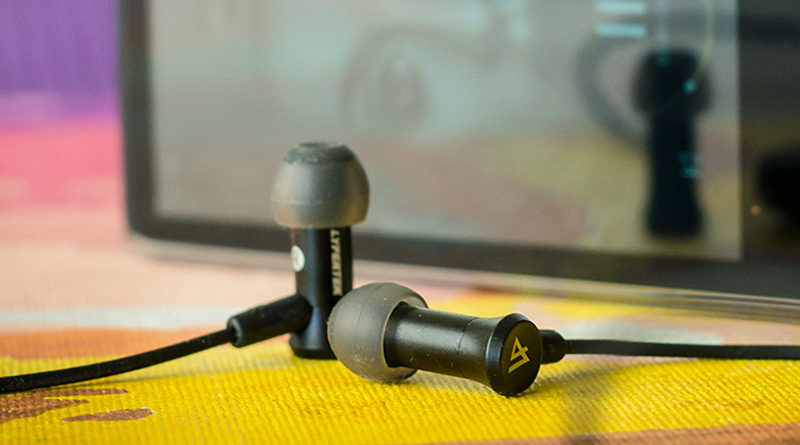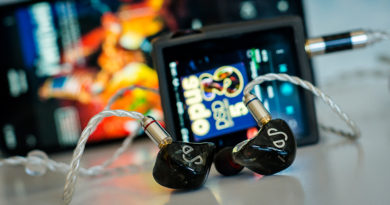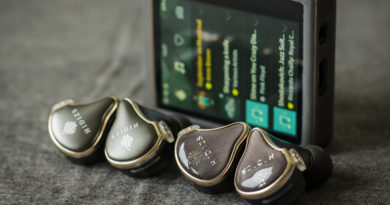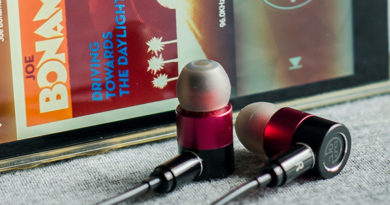Lypertek BEVI — good example of pure armature IEMs

While most of the companies are commonly experimenting with the hybrid combination of drivers, there are only few brands who would follow the tradition and bet on a single driver technology incorporating it in their new product. It has been a while since we had single armature driver IEMs to review and today is the day of getting some rest from hybrid setups.

First, about Lypertek brand: it is a relatively new market player from China with only two products in current portfolio and almost no information about their background. Official website wouldn’t shed more light, neither Facebook page would be much of a help. However, there are numerous reviews of MEVI — single dynamic driver and first Lypertek IEMs — done by respected community members with mostly positive conclusions.

Today we would be dealing with the latest product by Lypertek — BEVI — single armature IEMs with the price of ~$50.
You can buy Lypertek BEVI at PenonAudio store
BEVI technical specifications:
- Driver type: single balanced armature
- Impedance: 7Ω
- Frequency Response Range: 15kHz — 22000Hz
- Sensitivity: 106dB ± 3dB at 1mW
- Cable: 120cm ± 10cm, oxigen-free copper wire with remote and microphone
- Plug: 3.5mm, gold plated, 4 poles

Packaging:
Lypertek BEVI comes in small white box with most of the information about the product, box contents and short user manual printed on it. Good and modern approach to save some trees

Unlike in many other products with additional inner box compartments, BEVI IEMs are placed inside the storage case together with a set of silicone eartips and other accessories which are:
- BEVI IEMs with cable
- 4 pairs of silicone eartips (XS/S/M/L)
- Wax loop to clean output nozzles
- Cable clip
- storage case

Despite some simplification of the package arrangement, BEVI exhibits pretty rich contents in this budget. Wax loop is a rare accessory which is very useful to clean the tiny nozzle openings and including storage case is always a good idea as well. Beside, the build quality and design of this case are excellent.

Build quality and design:
There were some negative feedback about build quality from the reviewers of the previous product — MEVI. Some shell and remote control elements had a free play… Fortunately, Lypertek has gone through the feedback and you wouldn’t find anything like this in BEVI. Overall build quality is decent, no rattling, no free play, excellent alignment of parts. Moreover, it seems that Lypertek also reconsidered their approach to design in overall making it more complex, adding lots of new elements and additional branding.

Each earphone is made of two aluminum parts with neat white logo imprint on the backside, channel indicator and brand name imprints on the base. Base is ending with the output nozzle, creating a classical bullet-like shape of pure armature IEMs. Nozzle outer diameter is only 4mm which is not much universal when it comes to finding exchangeable eartips. Cable is not detachable but the connection points are secured with solid plastic supports.

Cable is straight, 1.2m in length with texturized soft braid which would not tangle. It is also equipped with aluminum Y-splitter, plastic remote control and gold-plated 3.5mm jack with aluminum housing.

Remote control has 3 buttons with the following functions when connected to a smartphone:

In fact, this remote would also work even if connected to any DAP capable of in-line remote function, at least HibyOS based ones. In this case, double clicks of +/- buttons would change tracks while single click would result in PLAY/PAUSE. Volume control function is not available. Buttons are tight and reliable, not having any free play and not producing any noise.

In overall, the build quality is geat. There are no issues similar to what reviewers described in MEVI model. The only drawback is the cable that is neither detachable, nor twisted and a little prone to microphone effect.
BEVI is great product in terms of fit and wearing comfort. Small weight and bullet-like shape is a good combination providing universal and comfortable fit for many people. It is not the best choice for exercising due to the absence of the additional elements as earguides but definitely one of the best options for long listening sessions at home.
Sound quality tests:
Source equipment: Hidizs AP80 DAP, Hidizs AP200 DAP

Lows and midbass:
Deep bass is not evident, placed far behind the entire scene and lacks the amount of presence as well as amplitude. It is like being more imaginary instead of clearly perceived. At the same time, midbass has much better presence, clarity and amount. It does sound thin with only a fraction of air required to create a powerful hit, but at the same time it has a good detalization and texture. This is very common for a single armature IEMs to have this much recessed lows with most of the potential gathered on mids and treble. We wouldn’t say that BEVI suffers a lot from the absence of bass — it just lacks the power to reproduce bass-heavy tracks, marking its presence but not really allowing to feel its strength.

Mids and vocals:
Lower mids despite a good presence and resolution might sound a bit thin and less natural, whereas upper mids are perfectly exposed and precisely delivered. The amount of details in mids is much higher, instrument layering and separation are good and this range is delivered well in overall. Female vocals are brought to front whereas male vocals sound a bit more distant, both are natural whereas the latter is not prone to lisping. The most of the potential in this range is disclosed with orchestra or instrumental tracks with lots of string and bow instuments. Overall resolution in mids is excellent and at the same time not producing any piercing effect or over bright tonality.

Treble:
Close to perfect. BEVI’s treble is much more carefully tuned in comparison to many hybrid models. This tuning is balancing between the delivery of the highest resolution possible while maintaining neutral tonality. There is no excessive sharpness or enourmous extension of treble, just the proper mixture to balance the other frequency ranges. Such approach doesn’t add much of coloration to the sound signature, making it more universal for any type of music genres. Resolution is decent here, allowing to catch the tiniest sounds of cymbals with lovely extension. Sibilances or excessive noise are not an issue here (despite very low impedance) which shows that armature drivers are of a good quality and further tuning is done on the appropriate level. Moreover, treble is gently served, not affected by piercing sparkles or sudden peaks on certain notes — sounding even and smooth.

Instrument layering and separation:
Instrument layering and separation are moderate. Instuments do not tend to mix and have a good contouring but the scene feels a bit narrow. There is a vocalist at the front with most of the instruments gathered behind. Seems that the lack of air and volume of lows and lower mids influence the entire scene forcing it to take a smaller scale.

Lypertek BEVI sound in overall:
BEVI sound could be described as neutral, with detailed mids and treble and recessed lows. Balance between mids and treble is good but the decrease in lows would not let BEVI to directly compete with hybrid models in terms of AFR. Such AFR would be mostly suitable for music genres like electro, vocals, instrumentals, orchestra, classics, rock, metal, etc. Not really suitable for hip-hop, rap, drum&bass and any other bass-oriented genres.
In comparison to Shozy Zero:

Shozy Zero are based on single dynamic driver and have exactly the opposite signature — warm, bassy and with recessed treble. Therefore, the direct comparison would be a waste of time. The only thing common for both products is bullet-like shape. Great example of having completely different options almost for the same amount.
In comparison to BQEYZ KB100:

KB100 are hybrid IEMs with additional dynamic drivers to improve the performace on lows. In fact, KB100 do have better lows and midbass presence while staying close to BEVI in terms of the resolution/presence of mids and treble. A bit brighter coloration in KB100, though. In its turn, BEVI seem to be a bit more gentle, directing all of it’s potential to render mids and treble more accurately and less striking. Therefore, despite the fact that the sound of KB100 is more balanced, someone might still consider BEVI if no bass-heavy tracks are in their playlist.
In comparion to Kinera Seed:

Kinera Seed is another example of hybrid IEMs but this time it is much closer to BEVI in terms of sound signature. We would say that Seed have more developed lows and midbass thanks to additional dynamic driver but the rest of the ranges sound very familiar. Fit is perfect in both cases whereas Seed IEMs have the additional earguides and would feel more comfortable while excercising.
Conclusion:

Lypertek BEVI is a classical example of armature driver technology with all of its pros and cons in terms of sound quality and signature. As the result, we get armature IEMs with neutral sound close to dynamic IEMs but much better resolution and clarity of mids and treble in this price range. On the other hand, lows are recessed which is very common for this technology. With such classic tuning, BEVI IEMs would definitely be a good option for pure armature sound fans or for anyone else who prefers any mids-oriented tracks and wouldn’t like to suffer from excessive treble of many hybrid models. We would say that such music genres as rock, metal, classics, orchestra and vocals are the most appropriate for BEVI IEMs with its decent resolution and neutral tonality.
You can buy Lypertek BEVI at PenonAudio store




